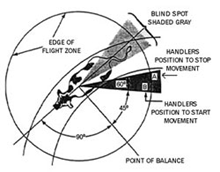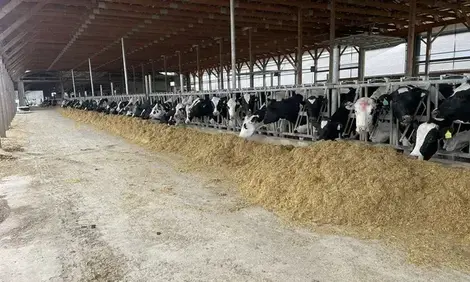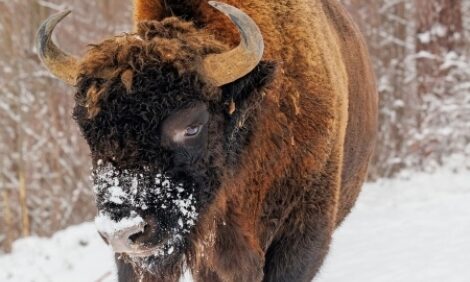



Driving is Not Herding
A few years ago, I was in Kenya, Africa, visiting development projects supported by my denomination. We visited a Masai tribal site on the Serengeti plain where young people were herding free ranging groups of cattle. There were no fences and plenty of wildlife nearby but herder and cow were well under control, reports Dennis Johnson, Dairy Production Systems, in this University of Minnesota Dairy Extension report.A couple of years earlier I watched an Argentine cowboy bring a 300-cow dairy herd in for milking. All the cowboy did was quietly hum as they calmly moseyed up a lane.
On another occasion, I saw seven or eight guys driving 30 feeder steers to a corral. The steers were driven onward with shouts and waving arms. They bolted through a fence and were off to the races. Later a single, experienced herder spotted them a mile away and herded them back and through an open gate with little apparent effort.
What’s going on here? What’s going on is evidence that a single person with a good understanding of animal behavior has better control of cattle by herding than a noisy wall of humanity driving the cattle.
Cattle may be moved by careful management of their flight zone. Think of flight zone as “personal space”. It is an imaginary circle around the animal (Figure 1). When the animal senses something entering its flight zone, it will move away, with the direction of move determined by the animal’s point of balance.

Animal behaviorist Temple Grandin, Colorado State University, discusses the topic effectively on her website. The following is extracted from that site with minor editing:
The point of balance is at the animal's shoulder. Livestock will move forward if the handler stands behind the point of balance. They will back up if the handler stands in front of the point of balance. Many handlers make the mistake of standing in front of the point of balance while attempting to make an animal move forward in a chute. Groups of cattle in a chute will often move forward without prodding when the handler walks past the point of balance in the opposite direction of each animal in the chute. It is not necessary to prod every animal.
Handlers who understand the concepts of flight zone and point of balance will be able to move animals more easily. The flight zone is the animal's personal space, and the size of the flight zone is determined by the wildness or tameness of the animal. Completely tame animals have no flight zone and people can touch them. An animal will begin to move away when the handler penetrates the edge of the flight zone. If all the animals are facing the handler, the handler is outside the flight zone.
When moving livestock from a large open area, understanding flight zone behavior and utilizing a few basic principles, moving animals in a calm and orderly fashion becomes very easy (Figure 2). To keep the animals moving in an orderly manner, the handler alternates between penetrating the collective flight zone and withdrawing from the collective flight zone. Alternating pressure on the flight zone is more effective than continuous pressure. When the handler moves in the zigzag pattern, she penetrates the flight zone when walking in the opposite direction of desired movement and retreats from the flight zone when walking in the same direction of desired movement.

To keep animals calm and move them easily, the handler should work on the edge of the flight zone. She penetrates the flight zone to make the animals move and she backs up if she wants them to stop moving. The handler should avoid the blind spot behind the animal's rear. Deep penetration of the flight zone should be avoided. Animals become upset when a person is inside their personal space and they are unable to move away. If a group of animals balk at a smell or a shadow up ahead, be patient and wait for the leader to cross the shadow.
Here’s a tip for training calves to respect light electric fencing. Train them on a small piece of pasture first. When they are first released, station a handler at the fence so they get their first shock parallel, not facing the fence. If the calf gets its first shock facing the fence, it will often leap forward, not back, taking the fence with it. Include a few experienced animals in the group to provide positive leadership.
Inexperienced cattle handlers are often tempted to drive animals. Patient utilization of animal behavior will yield a better result.
August 2009



